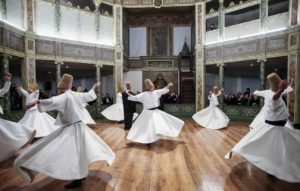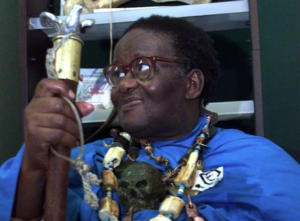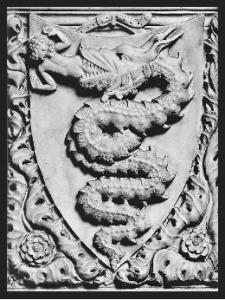In Appendix 3 and in section 5.1 of my new book Kemetic Alchemy and Tantra, I postulate that there are three bloodlines which make up most of the people in Africa. These bloodlines I call the DiaGha, the true indigenes of Africa (of which the Guan and Khoisan peoples are but two strong examples), the DiaLa (of which the Mande people are a strong example), and the DiaMo (of which the Frafra, the Oromo, and the Shona are strong examples). I also postulate that although the Akan peoples of West Africa have common language and cultural aspects that comprise an eclectic mix of these three bloodlines. This is not a shocking finding for Akan people. When asked where they are from, Akan people sometimes say that they are from the Mande region (i.e., the DiaLa connection). Other times, some Akan people may point out that Akan are Mossi people (i.e., the DiaMo connection). The linkage between Akan and Guan peoples is also very much known and accepted among Akans.
That being the case, is it possible to actually show that this is the case? That Akan people are Mande, or Mossi, or even Guan? In this article, I will demonstrate that Akan people in fact constitute all three influences, as is already commonly known by Akans. What is more important in this demonstration is not only that the Akan people comprise DiaGha, DiaLa, and DiaMo influences. Rather, the demonstration is to underscore the reality of these three bloodlines. All too often, Africans themselves and others outside of Africa think of Africa as being made up of diverse peoples and cultures. While this claim is undoubtedly true, as evidenced by the large variety in African tribes and peoples, a closer look at exactly who Africans are, from comparative historical, cultural and language standpoints would lead one to conclude that beneath the veneer of incredible diversity across the continent, Africans are more alike than different. A material analysis on cultural and historical levels has already been done by none other than the pre-eminent French ethnologist of France’s colonial territories, Maurice Delafosse. Delafosse’s work in this regard is titled Les Noires de l’Afrique (i.e., The Blacks of Africa), was published exactly a century ago (in 1922), and it is the subject of an article I have written titled Delafosse does it again, in Les Noires de l’Afrique. In his book, Delafosse comes to pretty much the same conclusion I am making here, having arrived at it from a different standpoint, that much as African people seem different, they are in fact very much alike.
The linguistic analysis on the subject of the alike nature of Africans despite a great variety in languages and dialects has also been done. That work, whose name appears in the title of this article, is known as Polyglotta Africana. Polyglotta Africana is a one-of-a-kind study done by German missionary Reverend S. W. Koelle and that was published in a dictionary-like format in 1854. The context that led to the emergence of this work is interesting. Koelle, who was placed in a unique historical time period and geographical location, Freetown (in today’s Sierra Leone) was able to interview many freed slaves who were brought there. Through his interviews of these freed slaves, he was able to have firsthand experience of the variety of their languages. As a result of this situation, Koelle got much of his linguistic data from these freed slaves, and through that, was thus able to compare 280 words from 200 African languages and dialects. Through this comparative study, Koelle was able to show that many of these seemingly disparate and unrelated African languages and dialects were in fact alike and the same in many cases. The situation thus afforded Koelle the opportunity to show that much as there is variety in Africa, on the basis of language, upon looking more closely, there is in fact more “alikeness” or sameness among African peoples, on the basis of language.
Taking these two analyses a step further, I shall demonstrate that the three bloodlines I have postulated for the Akan (and other Africans) feature prominently among the Akan. The methodology I shall adopt is based on select word and phrase entries taken out of Koelle’s language comparative study data. The words are those of ‘spoon’ and ‘spear’, and the phrase is that of ‘to give thee’. I shall compare these word and phrase entries with their corresponding entries in Reverend J. G. Christaller’s 1933 dictionary, titled Dictionary of the Asante and Fante language called Tshi (Twi). It is a standard reference used among individuals who study Twi, Fante and other related languages and dialects of the Akan people.

[1] Akan word for spoon: ateré (Christaller, 1933, p. 504)
(same as Mossi, akodera)
[2] Akan word for spear: kama/kambaa (Christaller, 1933, p. 223)
(same as Mandinka/Bambara, tamba)
[3] Akan word/phrases for giving: ɛma – to give [to someone]; the ‘ɛ’ in ‘ɛma’ is exactly the ‘é’ in féma of the Tene. E.g., ɔma n’ani – he ‘gave his eyes’, where “he gave” is “ɔma”, and “his eyes” is “n’eni” (Christaller, 1933, p. 302) (same as Tene, féma)

What this minor comparative study has demonstrated is that the Akan languages (Twi, Fante as examples) are influenced by languages from all three bloodline groups. In the first case, for the word ‘spoon’, the Mossi word ‘akotere’ (see first table), is similar enough to be identical to the Akan word ‘ateré’ (albeit, the Akan word appears to be a contraction of the Mossi word). In the case of the word for ‘spoon’, the Mande word ‘binga’ is far off enough to be considered different. In the second case, for the word ‘spear’, this time it is the Mande word ‘tamba’ (see second table) which is similar enough to the Akan word ‘kama/kambaa’ to be considered identical to it. In this case, the Mossi word for ‘spear’, ‘kande’ is different enough to be considered to be another word. To interject at this juncture, it is quite interesting to me that on the one hand, a word such as spoon, which has more of a cultural context, connects the Akan language to the DiaMo language of the Mossi people. On the other hand, when it comes to the issue of war, and that of the warrior, the Akan language shares the same word as that of the DiaLa languages of the Mande people. The Mande were/are known to be great warriors. In the descriptions of the DiaLa people that I gave in Appendix 3, I also emphasized the “rulership” and the warrior path with the DiaLa description.
However, in the third case, that of the phrase “I give thee”, the Akan word/phrase for “to give”, “ɛma” is not similar to that of the Mossi, “me ko fo & mamko fo”. While it bears some similarities with that of the Mande, “mbara dima”, in the sense that the suffix ‘ma’ in ‘dima’ is the same as the word ‘give’ in Twi and Fante, it is more similar to a third language within the second table, Tene. In Tene, the phrase for ‘to give thee’, is ‘féma’ (see last line of second table). In fact, in colloquial Twi, the equivalent would be ‘fama’. One would also notice that although in this third case, the phrase in the Akan language and the Tene language bear enough similarity to be identical, in the case of the word for spear, the Tene language differs significantly from that of the Mande languages/dialects for it to be considered different. This leads me to surmise that the Tene language is not a Mande/DiaLa language, but rather a DiaGha (or Guan) language. To support this position, it is also noteworthy to find that the phrase for ‘I give thee’ in the Soso language is ‘mbada fima’. Here, the latter part of the phrase, ‘fima’ is similar to ‘féma’ of the Tene, and also to ‘fama’ of present-day Twi. What I make of this, is that the Soso people had began to integrate with the Tene, a DiaGha/Guan people, as evidenced in the Soso language. The other Mande languages on the other hand (Mandinka, Bambara, Vei) do not show signs of integration.
So, why would the Soso integrate with the Tene while the Mandinka, Bambara and Vei would not. The simple answer would be that the Soso were led by the same clan of people that constitute present-day Akan peoples in today’s Ghana. There are two reasons I shall furnish to support this position. The first one is that we know that the Soso were the leaders of the Ghana empire and that they were a matrilineal people. Evidence of this is given in the book A Tropical Dependency by Florence Shaw (i.e., Lady Lugard). Citing the Islamic scholar Al Bekri, who was a firsthand eyewitness in the court of the kings of the Ghana empire, she showed that in the Ghana empire when one king died or when his rule came to an end, it was not his sons that succeeded him. Rather, it was the son of the king’s sister. Or in short, the next ruler came from the matrilineal clan. That is the Ancient Kemetic/Nubian system that many others have written about and that I too have written about in my books. The second reason is that rulers in Africa who practiced this matrilineal system of governance and inheritance also practiced clan exogamy. Evidence of this can be found in Eva Meyerowitz’s works, for instance her paper titled The Origins of the “Sudanic” Civilization, published in 1972 by Anthropos. Clan exogamy means that Akan people and their leaders ‘marry outside’ their clan. In this regard, the Soso leaders of the Ghana empire that practiced the same form of matrilineal system of government as the Akan people today, being DiaMo people of the Lion clan whose leader, Maghan Diabe Cisse, was a descendant of King Solomon (for that account, see Delafosse’s 1913 work titled Traditions historiques et légendaires du Soudan occidental traduits d’un manuscrit arabe) would have married into Mande (DiaLa) and into Guan (DiaGha) peoples, rather than to their own. This is why both Mandinka/Bambara influences (i.e., the “mbada” part of the phrase “mbada fima” of the Soso for ‘I give thee’) and Tene influences (i.e., the ‘fima’ part of the phrase “mbada fima”). The Soso people of the Ghana empire were just like the Akan people of today, even if the language they spoke back then may be different from the Twi and Fante spoken by Akan people today (i.e., caused by different influences of DiaGha in the country that is now known as Ghana). We can see a similar situation with the Asante and Baule people who, only a few centuries ago spoke the exact same language, but the branch of the Asante people that have become Baule, having moved to a different territory and having incorporated the language of the indigenes there into their own, now speak Baule, yet the same blood runs through their veins as that of their people in Asanteman!
And this last point underscores a final point I would like to make in this article. The Akan people of today are a mixed group. What we have in common, what unites us, are the languages of the Akan group, and the culture we share. Yet, the major bloodlines of the peoples of Africa in general and of West Africa in particular are among the Akan people. We are really like the rest of the Africans, or, better said, much of the rest of Africa (not all) is reflected in the Akan group. And this aspect of having different bloodlines represented in one group is not only true of the Akan people of West Africa. As further examples, it is also true of the Gonja, the Hausa, the Mongo, the Nguni, and the Senufo.
Outside Africa, one analogy that we can consider in order to highlight this mixed nature of Africans would be to consider the people of the the United States with European backgrounds. The white people there have ancestors that come from different parts of Europe. Yet they all see themselves as Americans. What unites them are for instance the practice of democracy, and also the capitalist system of commerce and economics. Or we could alternatively think of the black people of Barbados who come from different parts of Africa but who are united under one beautiful nation. The point of all this is for Africans to realize that they have more in common than they may realize. We should look at ourselves more in terms of our commonalities, rather than in terms of our differences.
Article Themes: African Unity, Sankofa, Diaspora, Pan African
Related blog posts
My interview with Uranian Streams
Bowdich like Meyerowitz noticed parallels between Akan and Ancient Egypt
An Akan shaman and his gnome mentor
The Monroe Institute focus levels and brain wave frequencies
The Thunder Cats and the feline beings (the Jha) of Sirius
Dr. Wade Nobles on Empowering African People
Indigenous humans acting as planetary guardians



